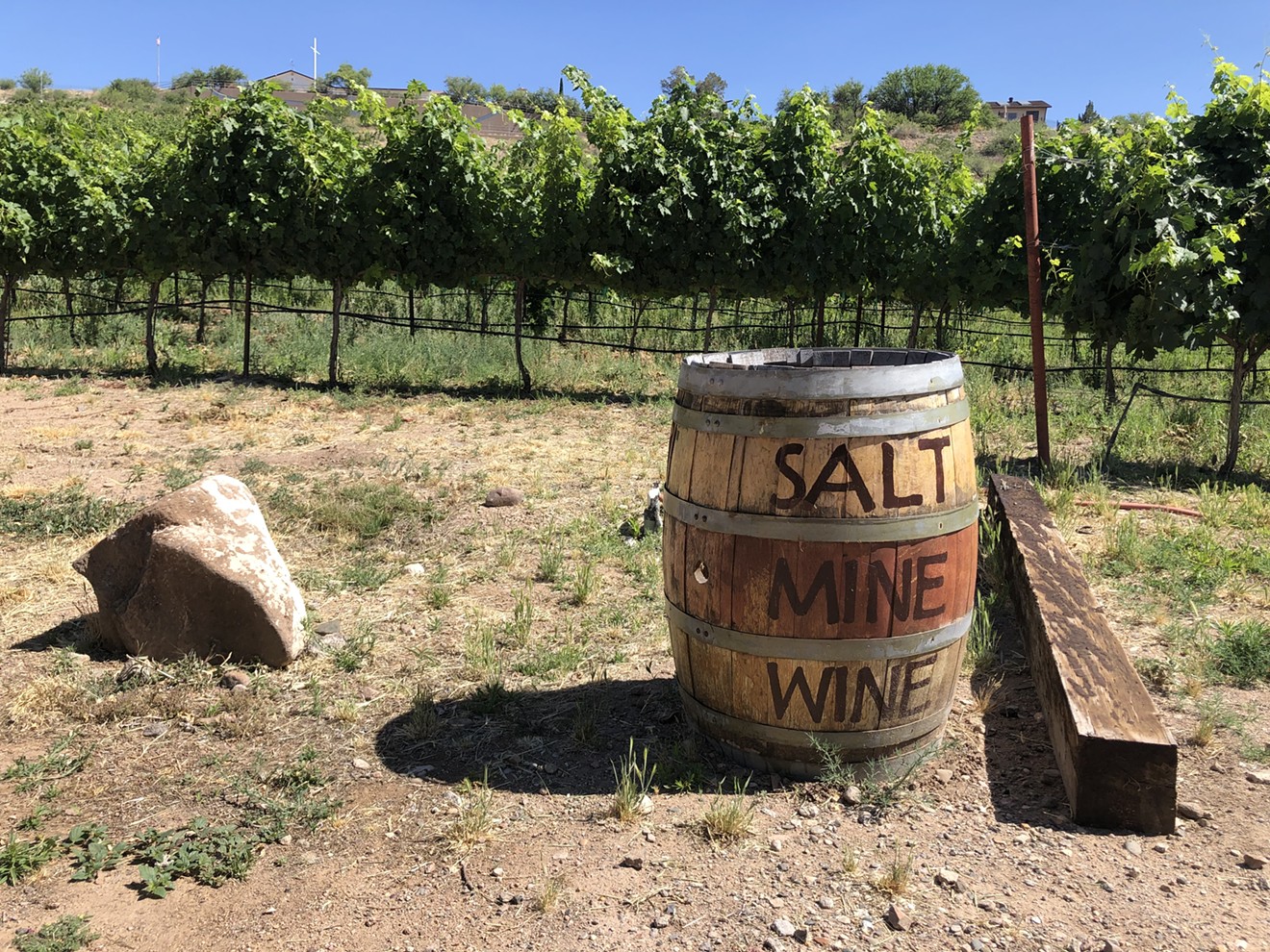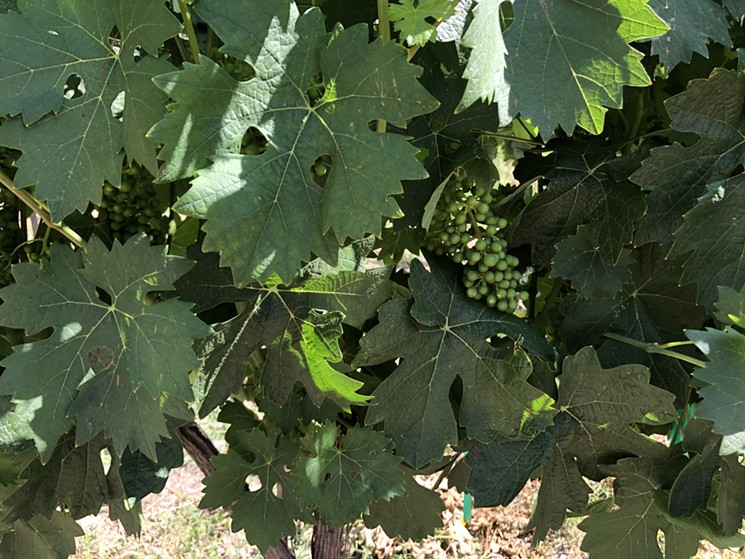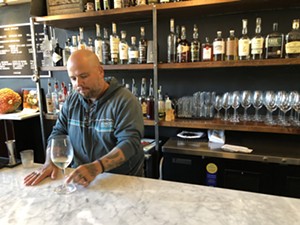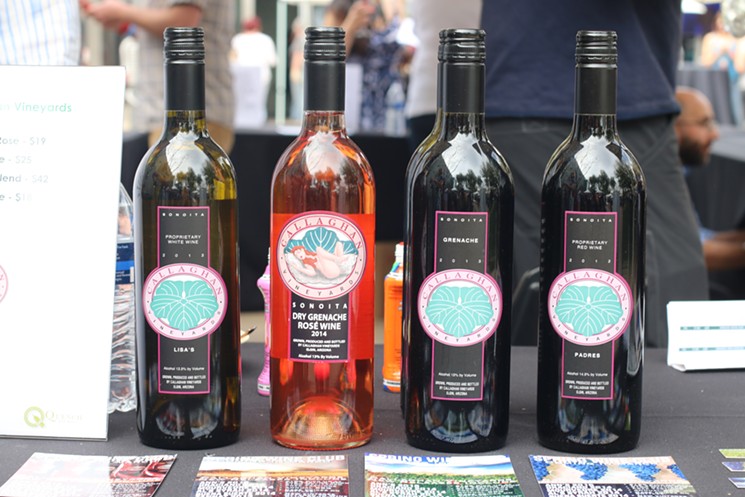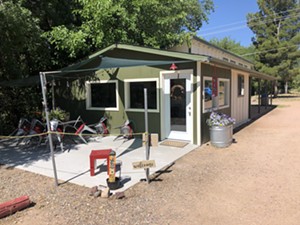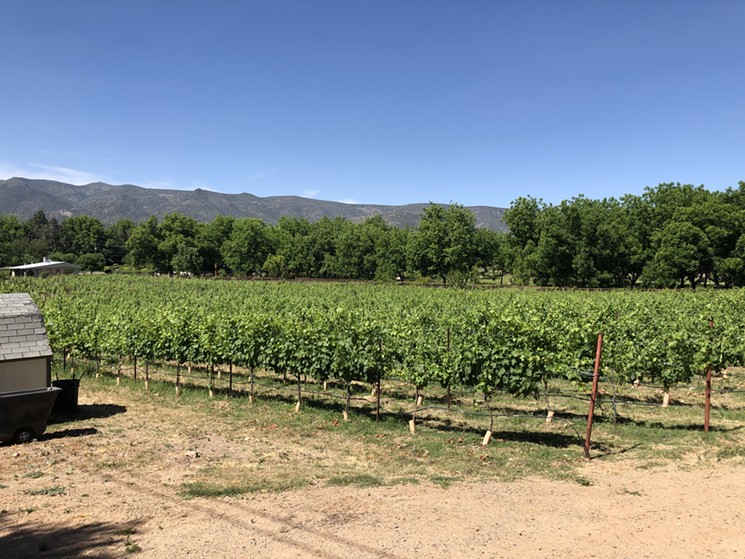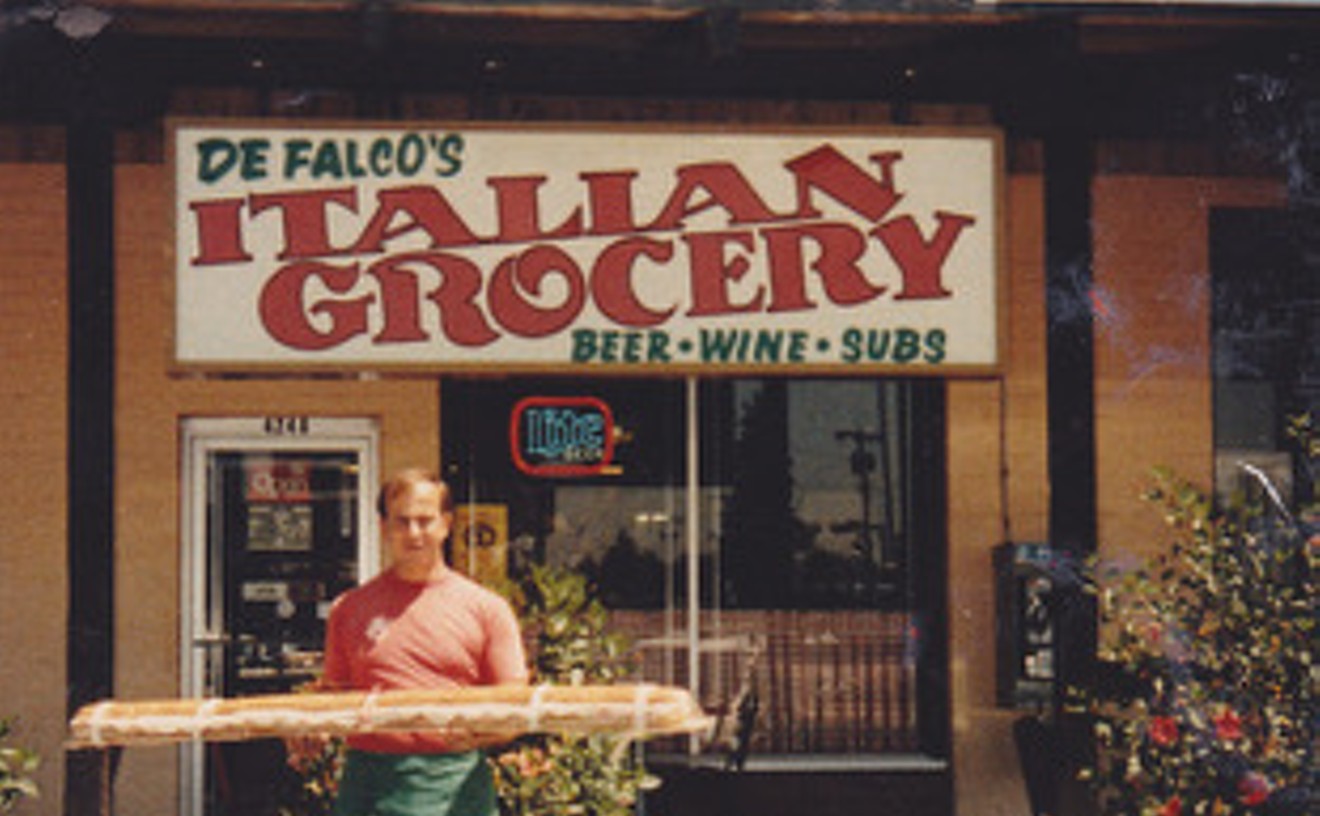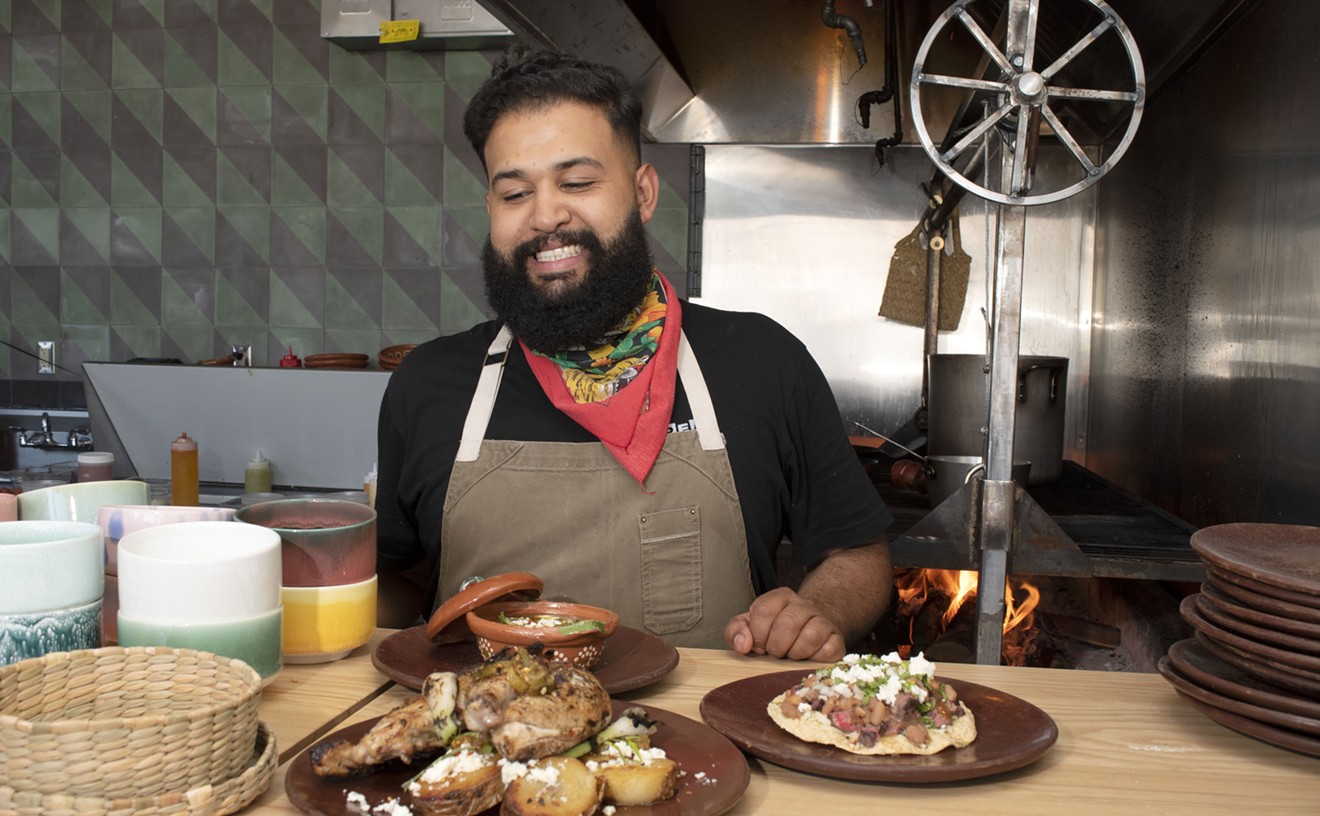Welcome to Sonoran Arcana, a column seeking to probe the margins of Arizona cuisine and define a more specific, novel cuisine that has emerged in America's great Sonoran Desert: New Arizonan. Here, we will venture into the arid wilds and culinary unknown to spotlight the chefs and foragers, the millers and brewers, the miso masters and palo verde pod-pickers who are pioneering New Arizonan cuisine, or simply rocking out the food of Arizona. So throw open the doors to your mind and enjoy.
Sam Pillsbury, a former film director who has grown grapes in Willcox since 2000, believes in Arizona wine — even if others don’t. “People who think they’re wine experts stand in front of me and laugh in my fucking face and say you must be crazy growing wines in the desert,” he says. “It’s just another bigoted preconception.”
In many ways, it isn’t hard to see both sides of this exchange.
On the one hand, “Arizona wine” doesn’t have the cachet of “French wine” or even “Washington wine” or “Hungarian wine.” When people think of Arizona, they don’t think of trellised rows covering a breezy knoll by the sea, or the green slopes of a lush valley. They think of a hot desert. In addition to the aridity, cowboys, and cactus, all of which would seem to be anathema to the old ideals of growing grapes, our desert is hardly ever what it seems.
In soil-and-sun reality, you can grow grapes with skill and intention in central and southern Arizona.
You can make objectively great and wondrously unique wines rooted in place, as evidenced by Pillsbury Wine Company’s heap of awards. And as evidenced by the fact Arizona wines have been served in the White House and come with flavors and in blends seen nowhere else in the world.
The Southwest and Mexico have the oldest tradition of winemaking in the New World. Five centuries ago, not long after the Spanish landed, grapes were planted and wine was fermented, largely so that Christian religious services could be performed.
Following Phoenix’s settlement by the West during the second half of the 19th century, pioneer vintners were even making wine in the Salt River Valley. That changed with 1920 and Prohibition. From then, winemaking in Arizona went dormant until the early 1980s, when the first progenitors of today’s young, robust, still-evolving wine scene got going.
Today, there are more than 100 vintners in the Arizona Vignerons Alliance. Today, there are three designated AVAs (American Viticultural Areas) — the Verde Valley, Sonoita, and Willcox, also the state’s three major wine regions. Today, though wines have improved dramatically in the last 10 years, vintners are still experimenting. They’re still learning the nuances of climate, sun, and soil, and which grapes grow best where.
Decades ago, the wines of Napa Valley and Sonoma were looked down upon. The scene was young, vintners were learning, and attitudes were still changing. Arizona wine is young, and, wine being a translucent product that absorbs the land, will grow very differently.
Making wine in the desert poses challenges, as Pavle Milic has long known and, more recently, intimately discovered. Milic, who has helped with vintages at a friend's Napa winery, is the co-owner and beverage ringleader of FnB, where, since its 2009 opening, he has curated a varied roster of Arizona wines. He is also in the process of finishing his own vineyard, Los Milics, set to open in Elgin in 2020.
“We’re a high-desert-elevation wine-growing region, right?” Milic says. “During harvest in Napa, it never rains. Here, during harvest, it happens to coincide with this beautiful, dramatic thing that we call the monsoons.”
In a desert, water, by definition, is scarce for most of the year. That isn’t the obstacle to growing grapes though. “It’s not an issue of scarcity,” Milic says, “it’s an issue of too much.”
The climatic quirks of southern Arizona test vintners: Monsoons. Years when they come late — or in smaller amounts. Spring frosts that can wipe out crops after budbreak, the visible beginnings of the annual growing season. And even apart from climate, there are the variables beyond lack of knowledge that come with being a younger wine region: added costs for buying oak barrels, an absence of traveling bottling services to package product, knowledge vacuums in the minds of consumers ...
Despite the challenges, Arizona’s two southern wine regions have hopeful, cross-sea parallels. “If we had to draw comparisons,” Milic says, “I think we’re very close to what happens in Spain, and some parts of southern France. We’re very close to what happens in some parts of southern Italy.”
Kent Callaghan of Callaghan Vineyards, a luminary of the scene since 1990, agrees. He cites Spanish, Rhone, and central and southern Italian grapes as some thriving in Arizona.
Moreover, he believes the desert has qualities giving wines unique thumbprints. In the wine world there is the pervasive idea of terroir, the notion that the taste of place comes through, that the sunshine and farmer and methods and harvest and soil and humidity and wind and rain shape flavor. For example, Chablis has a chalky flavor because of the soil its chardonnay grapes grow in. Similarly, the Arizona desert has its own territorial signatures.
“Between the iron and the calcium here, you definitely get distinctive characteristics,” Callaghan says. “[The wines here] have denser tannins. You can feel it in the mouth. It’s more concentrated. There’s more guts.”
Unlike the wines of California, fruit in Arizona wines tends to take a back seat. “The wines here are not fruit-centered,” Callaghan says. “They have an earthy — a lot of people call it Sonoita earth or dust. The fruit is in the back. Again, they remind me of Old World wines.”
This is why you’re likely to see big Spanish grapes like tempranillo and regional Italian grapes like vermentino here. There are even Old World grape varieties, like monastrell (France) and graciano (Spain) that people believe do better here than across the pond.
“They do extremely well in Arizona,” Callaghan says. “I think it’s because in the places they originate in, they had a hard time ripening them. So they were relegated.”
Arizona wines, like the wines of any place, vary between growing regions and vineyards. But there are general tendencies that can be underscored, and places, like Callaghan, where Old World varieties thrive.
One Callaghan wine with Burgundian roots is what got Pillsbury into Arizona wine in the first place.
“I discovered a chardonnay made by Kent Callaghan,” he says. “It was the most extraordinary chardonnay I had ever had in my life.” After tasting this wine, Pillsbury drove down to Willcox the next day. He bought 40 acres across the street from the plot of grapes that Callaghan used.
“I believe it’s possibly the best place in the world to grow wine grapes,” he says. “I don’t even know what I’m doing and I’ve got shit hot grapes, but I have all these awards. It has something to do with the terroir.”
What does Pillsbury like about his vineyard’s terroir?
"Lots of sunshine." Soil that drains “almost immediately.” High altitude, which changes UV levels. Temperature swings of up to 40 degrees at night, tempering ripening. An “igneous alluvial soil” ground over time “almost to a fine powder.”
After pondering opening a vineyard in his native New Zealand, Pillsbury, decades later, is thrilled to be in Arizona. “The high desert is amazing because it’s so clean,” he says. “There’s not the concerns about things like rot, which you have in more humid climates.” Additionally, winds blow away “predatory insects and mold.”
“The chardonnay that we grow is just insane," he says.
Milic echoes that desert wines turn out a little differently. “Unique,” he says, “is an understatement.”
Callaghan agrees, citing soil and sun, diverse planting to safeguard against climate variability, the scene's relative youth, and that the people growing the grapes are still, at this stage, the people running the tasting rooms. These days, they spread across the three Arizona growing regions and beyond.
These days, local tasting rooms have a lot to offer — even in the desert. Callaghan says, “The wines in Arizona are so much better than they were 10 years ago that it’s funny.”
[
{
"name": "Air - MediumRectangle - Inline Content - Mobile Display Size",
"component": "18478561",
"insertPoint": "2",
"requiredCountToDisplay": "2"
},{
"name": "Editor Picks",
"component": "16759093",
"insertPoint": "4",
"requiredCountToDisplay": "1"
},{
"name": "Inline Links",
"component": "17980324",
"insertPoint": "8th",
"startingPoint": 8,
"requiredCountToDisplay": "7",
"maxInsertions": 25
},{
"name": "Air - MediumRectangle - Combo - Inline Content",
"component": "16759092",
"insertPoint": "8th",
"startingPoint": 8,
"requiredCountToDisplay": "7",
"maxInsertions": 25
},{
"name": "Inline Links",
"component": "17980324",
"insertPoint": "8th",
"startingPoint": 12,
"requiredCountToDisplay": "11",
"maxInsertions": 24
},{
"name": "Air - Leaderboard Tower - Combo - Inline Content",
"component": "16759094",
"insertPoint": "8th",
"startingPoint": 12,
"requiredCountToDisplay": "11",
"maxInsertions": 24
}
]

